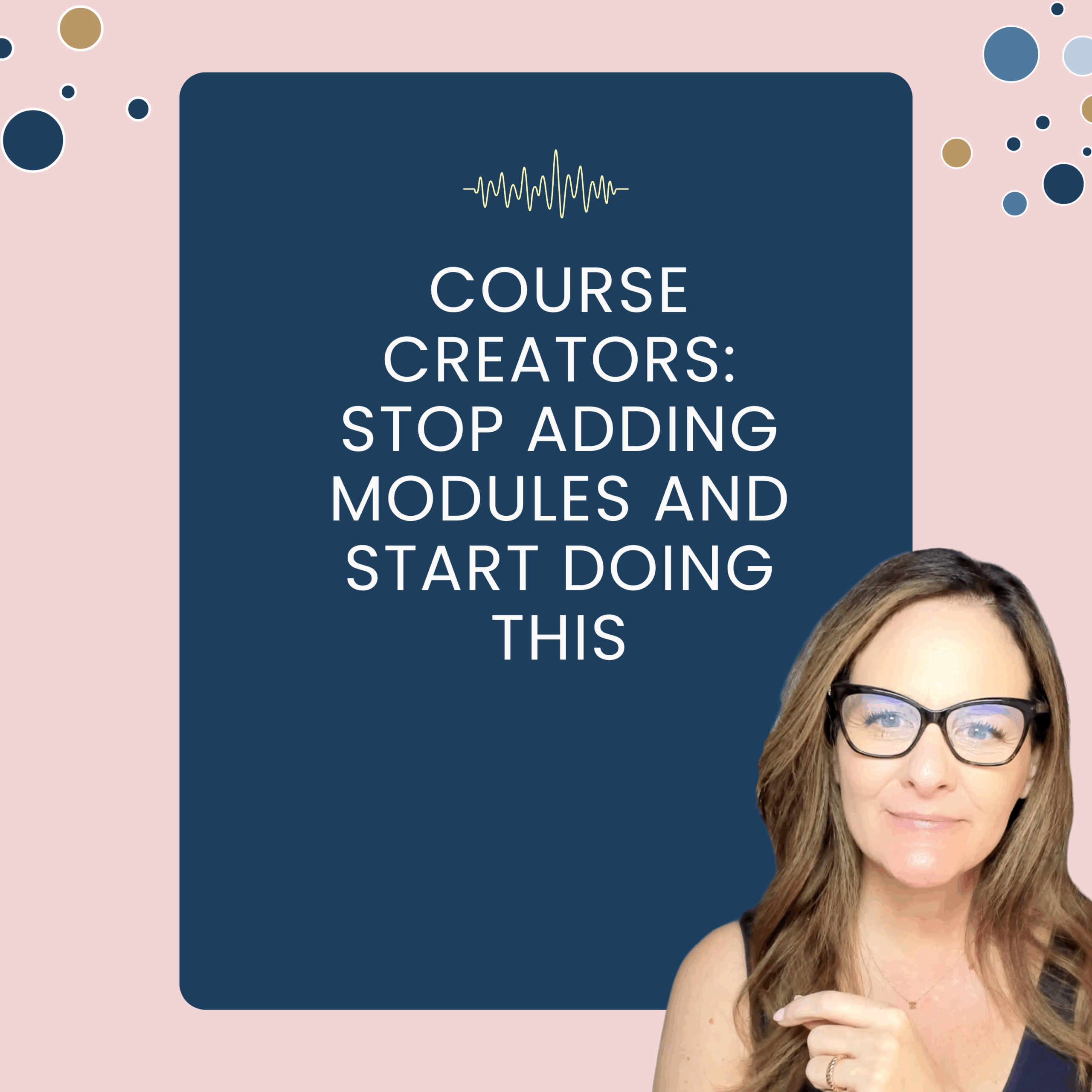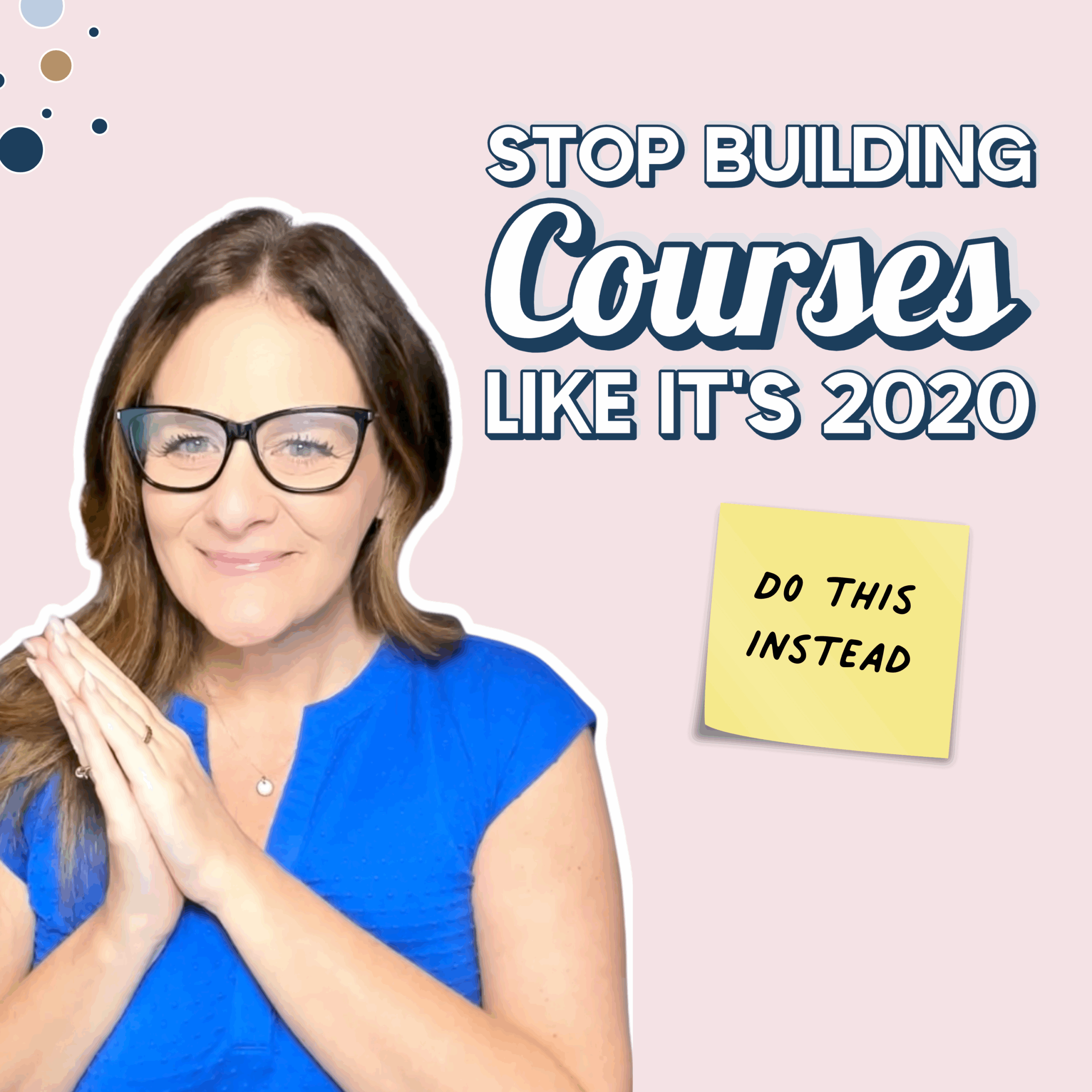I spent three months rebuilding my business after leaving wedding planning. I knew exactly what problem I wanted to solve: community builders were burning out trying to show up 24/7 in their communities.
Crystal clear problem, right?
So I created an offer. Called it “Community Strategy Intensive.” Very official sounding.
I put it out there feeling confident.
People would say, “Oh, that sounds interesting. What does that include?”
I’d explain all the things we’d work on together. They’d nod. Say “let me think about it.”
Then… nothing.
It took me three failed launches to realize I was missing the framework.
I knew the problem. But I hadn’t clearly defined the promise, and I definitely hadn’t explained the process.
Today, I’m giving you the exact three-step framework I use now to build offers that actually sell — not offers that sound good in theory, but offers that make people say “yes, that’s exactly what I need” without you having to convince them.
The Framework: Problem, Promise, Process
Every offer that sells — and I mean really sells — has three clear elements:
The Problem. The Promise. The Process.
When you nail all three, your offer becomes a no-brainer. People understand exactly what you’re solving, what they’ll get, and how you’re going to get them there.
When you’re missing even one? Your offer feels unclear, your sales calls feel like pulling teeth, and you wonder why nobody’s saying yes.
Let’s break down each one.
Step 1: The Problem (Why Vague Doesn’t Sell)
Your problem needs to be specific, immediate, and painful.
Not “you’re struggling with marketing.” That’s too vague.
Not “you’ll need better systems eventually.” That’s not immediate.
Your problem needs to be something your ideal client is actively dealing with right now that’s making their life measurably harder.
The Specificity Test
Can your ideal client read your problem statement and immediately think, “Oh my God, yes, that’s exactly what I’m dealing with”?
If they have to think about it or translate it? It’s not specific enough.
Vague problem: “You need help with your email marketing.”
Specific problem: “Your email list sits there unused while you panic-post on Instagram hoping someone will buy.”
See the difference? The second one paints a picture. You can feel the frustration.
Vague problem: “Your systems need improvement.”
Specific problem: “You’re spending 10+ hours a week on repetitive tasks that could be automated, and you’re too exhausted to take on new clients.”
One is theoretical. The other is Tuesday afternoon.
Why This Matters
People don’t buy solutions to vague problems. They buy solutions to the specific, painful thing that’s keeping them up at night.
Before you do anything else, write out the problem you’re solving in one clear sentence. Make sure it’s specific enough that your ideal client feels seen.
Step 2: The Promise (What They Actually Get)
You’ve nailed the problem. Now you need to make a clear promise about what will be different after working with you.
This is where most people get fuzzy.
They say things like:
- “You’ll have more clarity”
- “You’ll feel more confident”
- “You’ll have a better strategy”
But what does that actually mean?
Make Your Promise Tangible
Your promise needs to be tangible and specific. Not a feeling. Not a process. A clear outcome.
Think about it like this: if someone asked your client six months from now, “What did you get from working with [your name]?” — what would you want them to say?
Not “I got some good advice” or “I learned a lot.”
You want them to say:
- “I went from getting 2-3 inquiries a month to being fully booked with a waitlist”
- “I automated the tasks that were eating up 15 hours a week”
- “I built a community that actually engages without me having to be there constantly”
See how those are outcomes? Not feelings. Not processes. Results.
The Promise Formula
Your promise should complete this sentence:
“After working with me, you will have [specific, measurable outcome] so you can [what that enables them to do].”
Weak promise: “You’ll have a better social media presence.”
Strong promise: “You’ll have a 90-day content calendar and a simple posting system so you can stop scrambling for what to post every single day.”
Weak promise: “You’ll feel more organized.”
Strong promise: “You’ll have a client onboarding system that runs on autopilot so you can take on three times as many clients without drowning in admin work.”
The Sweet Spot
Your promise needs to be believable but also compelling.
Too small? Nobody cares. “You’ll have a slightly better Instagram bio” isn’t worth investing in.
Too big? Nobody believes you. “You’ll make six figures in 30 days” — yeah, sure.
Your promise needs to hit that sweet spot where someone thinks, “That would actually solve my problem, and it seems doable.”
Step 3: The Process (How You’ll Get Them There)
You’ve identified the problem. Made a clear promise. Now explain the process.
This is where people either overexplain or underexplain.
Don’t Give Away All Your Secrets
You don’t need to reveal every detail. But you do need to give people enough confidence that you know how to deliver on your promise.
Think of your process as the roadmap. Not every single turn, but the major landmarks along the way.
Your process should answer: “How are we going to get from problem to promise?”
The best processes are simple: three to five clear steps. Not fifteen. Not “we’ll figure it out as we go.”
Example Process
Say you’re a brand strategist.
Problem: “You’re confusing potential clients because your messaging is all over the place.”
Promise: “You’ll have clear, compelling brand messaging that attracts your ideal clients and makes sales conversations easier.”
Process:
- Step 1: We clarify who you’re actually talking to and what they need to hear
- Step 2: We craft your core message — the one thing you want to be known for
- Step 3: We apply that messaging across your website, social media, and sales conversations
Simple. Clear. Easy to understand.
Notice there’s no “In step one, we’ll do a 47-point brand audit using my proprietary framework…”
Nobody cares about the 47 points. They care that step one gets them clarity on their audience.
Keep It Logical
Your process should feel doable and logical.
When someone hears your process, they should think, “Okay, that makes sense. I can see how that would work.”
If they’re confused about how the steps connect? Simplify.
Complete Framework Examples
Here’s what it looks like when you put all three pieces together:
Example 1: Online Business Manager
Problem: You’re drowning in client work and can’t take on new projects because you’re spending 15+ hours a week on repetitive admin tasks.
Promise: You’ll have automated systems for your top three time-drains so you can reclaim 15 hours a week and take on higher-paying clients.
Process:
- Step 1: We audit your current workflow and identify your biggest time-sucks
- Step 2: We set up automation for those tasks using tools you already have
- Step 3: We test and refine the systems so they run without you
Example 2: Community Builder
Problem: Your community feels like a ghost town and you’re the only one posting, which is exhausting and unsustainable.
Promise: You’ll have an engaged community where members are posting, supporting each other, and showing up consistently — without you having to be online 24/7.
Process:
- Step 1: We redesign your community structure so members actually know where to go and what to do
- Step 2: We create engagement rituals that happen on autopilot
- Step 3: We activate your lurkers with a simple 30-day engagement plan
Example 3: Brand Designer
Problem: Your portfolio gets compliments but you’re not booking clients because people can’t figure out what you actually do or who you work with.
Promise: You’ll have a portfolio website that clearly positions you as the go-to designer for [specific niche] and converts visitors into inquiries.
Process:
- Step 1: We clarify your niche and the specific transformation you deliver
- Step 2: We design a portfolio that speaks directly to that ideal client
- Step 3: We create a simple lead magnet that turns visitors into qualified leads
See how each paints a complete picture? You know the problem, what you’re getting, and how you’re getting there.
That’s what makes an offer easy to say yes to.
Common Mistakes to Avoid
Mistake 1: Solving Multiple Problems in One Offer
Your offer should solve ONE core problem really well. Not three kind of well.
If you’re trying to help with messaging AND systems AND strategy all in one package, you’re confusing people.
Pick one problem. Solve it well. Create separate offers for the other problems.
Mistake 2: Making Promises You Can’t Control
Don’t promise “you’ll make six figures” or “you’ll get 10,000 followers.”
You can’t control those outcomes. What you CAN control is the deliverable.
Promise the thing you’re actually delivering — the strategy, the system, the website — and what that enables them to do.
Mistake 3: Overcomplicating the Process
If your process has 12 steps, it’s too complicated. Simplify to the major milestones.
Your potential clients don’t need to know every little thing you do. They just need to trust you have a clear path from A to B.
Mistake 4: Using Jargon
If you’re saying “holistic brand ecosystem” or “strategic alignment framework” — stop.
Use the words your actual clients use. Talk like a human.
Test Your Offer Clarity
Can you explain your offer in three sentences?
- Sentence 1: The problem
- Sentence 2: The promise
- Sentence 3: The process overview
If you can do that and someone immediately gets what you do and why they’d want it? You’ve nailed it.
If you’re stumbling or it takes five minutes to explain? Simplify.
Another test: Show your offer to someone not in your industry. Can they explain it back to you?
If not, it’s too complicated.
Your offer should be so clear that anyone could understand the value, even if they’re not your ideal client.
Your Action Steps
This week, write out your offer using the framework:
- What problem are you solving? (One sentence, super specific)
- What promise are you making? (One sentence, clear outcome)
- What’s your process? (Three to five simple steps)
Then:
- Read it out loud. Does it sound clear or jargony?
- Test it on someone. Do they get it immediately?
If yes, you’re ready to start selling it.
If no, simplify.
The Bottom Line
Your offer doesn’t need to be complicated to be valuable. It just needs to be clear.
Problem. Promise. Process.
When you nail those three things, your offer becomes a no-brainer. People understand exactly what you’re solving, what they’ll get, and how you’re going to get them there.
And when your offer is that clear? Selling it becomes so much easier.
Ready to build an offer that actually sells?
Join us in coCreator Society, where service providers, strategists, and creative entrepreneurs build smarter offers together — not alone.
We’re kicking off a sprint in November where we’re helping people build offers that actually sell using frameworks exactly like this one. You’ll get feedback, see what others are building, and have support every step of the way.
No more second-guessing every word in your office at midnight. Just focused work with people who understand what you’re creating.
→ Learn more and join coCreator Society
Your offer isn’t complicated. It just needs to be clear.






+ show Comments
- Hide Comments
add a comment